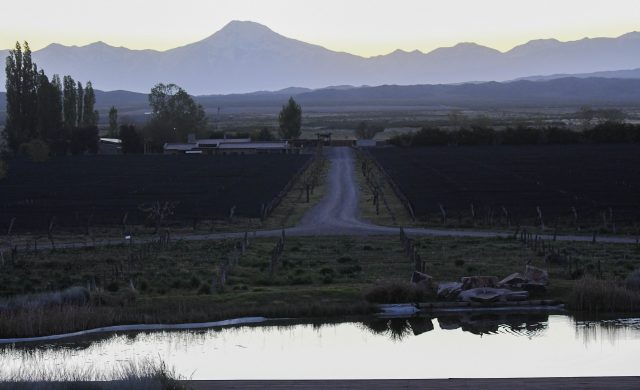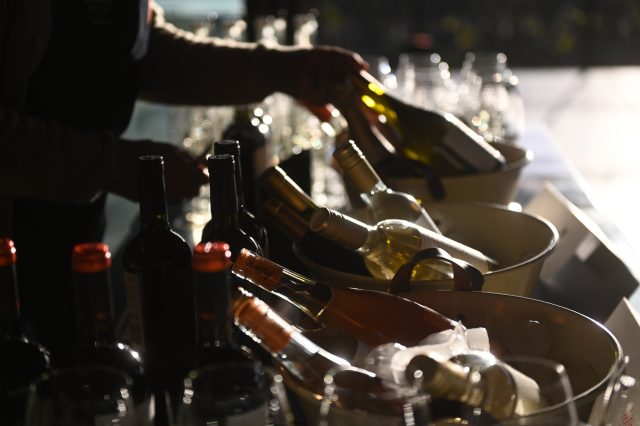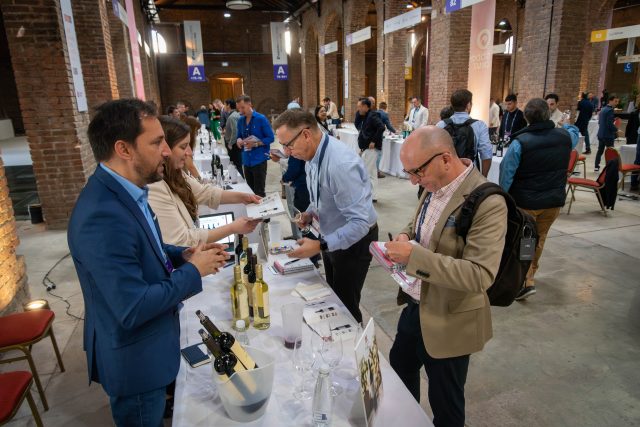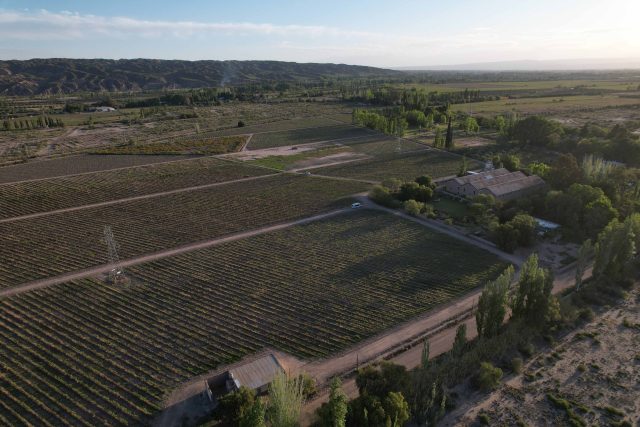At Vinexpo Explorer Mendoza 2025, 80 international buyers from across Asia, Europe and the Americas discovered a new side to Argentina’s most famous wine region. After a week of tastings, seminars and vineyard visits, they told db they had “underestimated Mendoza,” surprised by the wealth of diversity in varietals, soils and terroirs, outside of Malbec.

Vinexpo Explorer Mendoza 2025, which took place from 6 to 9 October, brought together 80 international buyers to explore 150 local wineries in the Argentine wine region, including seminars, tastings, and B2B meetings.
Mendoza is famed for its Malbec, but buyers, from Asia, Europe and America, told the drinks business they’d “underestimated Mendoza,” discovering diverse varietals, terroirs and soils, as well as a burgeoning focus on sustainability and premiumisation.
Susan Santoso, director at Alfa International Pte Ltd, Singapore, said: “I’ve learnt about the landscape, the people and the biodiversity of the different types of wines.
“What’s interesting for me is how the niche family wineries are able to create wines that are still very different from many others I have tasted around the fair. It’s a unique, niche part of Argentine wine potential that you could create something like this, aside from the classic Malbec that we typically know, you can actually find a lot of other things.”
Santoso was surprised by how producers were able to blend both Pinot Noir and Chardonnay and make something that is “a very good balance and is refreshing, and still very good white wines”.
Outside of Malbec

Arnt Eldor Winke, country manager at Galatea Beverages AS, Norway, said he’d discovered the “focus and awareness of sustainability is growing,” which he called a “good thing for Argentine industry in general, and also for the wine business.”
He was surprised by “the diversity of small and medium farmers; how they can produce delicate wines in all price ranges.”
Bence Petho, owner, Valentine VM Wines, Thailand, said the trip had taught him about the diversity of soil and terroir and the subregions of Mendoza. ”I’ve seen winemakers who experiment with not typical Argentine categories like old Semillon, and some very special red blends,” he said.
Ole Frantzen, partner, Calwine AB C/ O Ward Wines AB, Sweden, added: “I underestimated Mendoza as a winemaking part of the world incredibly. The wines we have tasted this week compared to the price points is amazing. Also, the top level wines and producers? I had no idea.”
‘There is much more here than what we’re exposed to’

Frantzen was taken aback by how the altitude impacts the quality of the wine. “Although you still have the warmth and the fruitiness, then the altitude provides the fine ending of the wine with the acidity,” he explained.
For Julianne Kennedy, senior manager, New World Wine Sourcing at AMI Group, United States, the trip had been “invaluable”. She said: “The biggest takeaway is gaining awareness or confidence of the region, and how close things are and how far away things are – feeling more comfortable with the actual area.
“I’m surprised by how much more there is here than what we’re exposed to. Generally, you hear just about Malbec and Torrontés, and it’s been so wonderful to get exposed to some of the other up-and-coming varietals, and a variety of winemaking styles.”
Powell Yang, founder, Monopole Consulting, Taiwan, had a similar experience: “It’s a bigger winegrowing region than I realised,” he remarked. “I could have known that if I looked at a number, but it’s different when you actually see it on the ground. There’s a lot of large-scale wineries that we’ve seen making mass-produced wine, but at some point, they need to put more focus on more premium products.”
A taste of Cabernet Franc

Jib Nasrallah, senior manager wholesale at Nova Scotia Liquor Corporation, Canada, had found that producers in Argentina were “really eager to do business in Canada.” He said this was “exciting”, and added, “they’re one of our best values in Canada for quality and what we’re paying for.”
He was surprised by the quality of the Cabernet Franc: “I didn’t realise the notes I’d be picking from it, and that it played such a big role in the varietals. In Canada, the role of Cabernet Franc does not compute – they want Malbecs and whites. But I think it would do well. It’s not French where it’s big, bold and aggressive… here it’s approachable, it’s easy, it’s balanced, and those green pepper notes, people would really appreciate that.”
Michael Kogan, CEO of Plume Ridge, United States, also discovered that “Argentina is so much more than just Malbec.” Like Nasrallah, he was wowed by the quality of the Cabernet Franc, and had also tasted some “very good” white Malbec.
When asked what had surprised him, he said: “The wineries are very much eager… everyone is suffering these days, they’re super open in terms of aggressive pricing and innovative packaging. How much wine is available is the other thing that surprised me. You drive and it’s just vineyards, vineyards, vineyards.”
Volume, size and scale

Jochen Heigoldt, CEO and founder, Vioneers, Germany, added: “I’ve learnt about the size and dimension of Mendoza as a wine growing country, I’ve learnt that it benefits from a very stable climate, and I got a very good understanding about how the wineries here produce, their economics and taste profile.
“Despite the height in Uco Valley, being 12,000 metres above sea level, it’s still pretty flat, because you’re still close to the high mountain ranges. It gives you cooler nights, and it makes sense as a winegrowing area.”
Thomas Hickman, manager wine & champagne, African + Eastern, UAE, had also been impressed by “the sheer volume of grape producers and wine being made in Argentina, and the high quality white wines – really good Chardonnay, and excellent Semillon as well.”
He was surprised by “the breadth of price points you can hit, and the quality of Malbec even at the entry level, and the depth of options.”
Eyes opened to the New World

And the main takeaway from Iván Acuña, CEO of Biosophy, Japan, was that “the Mendoza wine region is way bigger than what I knew, and the quality is amazing, the hospitality is also amazing. He added, “I’m very surprised in a positive way.”
Josue Bustos Jimenez, marketing manager, MOG Selections Vineyards, Costa Rica, said: “Mendoza is a powerhouse in the wine world. Actually seeing it with my eyes, and the enormous amount of wine and people, has been an amazing experience.”
He added that experiencing such high-quality New World wines was an “eye-opener”.
For Margaux Carpentier, buyer for Corney & Barrow, UK, the experience had been “a fantastic opportunity” to taste so many wines across Mendoza and learnt how varied the region is.
Building authentic connections

Anton Wright, CEO, ANW, United States, added: “I’ve been to a lot of trade shows, but this is a far more productive and meaningful way to see a region, find new wine and make deeper, authentic connections.
“This deeper understanding of the place lays a foundation for decades of better choices, marketing decisions and pricing, that you cannot learn in another country tasting Argentine wine.”
He’d been positively, but also negatively, surprised. While he thought that there “wasn’t a lot of value in the focus on Cabernet Franc,” he thought the diversity in terroir, expressions and styles was “so much greater than what the public perception is.” He added: “The world can benefit from seeing that, especially in the trade environment. There’s a lot of hidden value in many of the wines we’ve seen.”
Related news
How decades-old values of ‘people and place’ still guide Santa Julia
Pérez Cambet: ‘THC and CBD drinks are the biggest threat to the wine industry’
Bodega Argento on Fulham FC partnership: ‘We hope to raise the profile of Argentinian wines’


Dining and Cooking